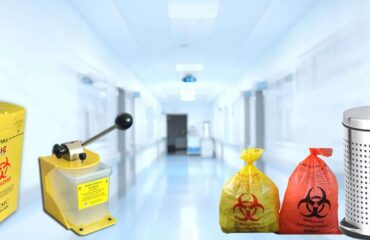Waste Management Disposal refers to the processes and activities involved in handling waste materials from their inception to their final disposal. This encompasses the collection, transportation, treatment, and disposal of waste, along with monitoring and regulation to ensure that waste is managed in a way that protects public health and the environment. Effective waste management seeks to reduce the adverse effects of waste on health, the environment, and aesthetics.

Key Components of Waste Management Disposal
Collection
- Definition: The gathering of waste from residential, commercial, and industrial sources.
- Methods: Curbside collection, drop-off centers, and specialized collection for hazardous materials.
Transportation
- Definition: The movement of waste from the collection point to a treatment or disposal facility.
- Methods: Using trucks, pipelines, or barges, ensuring minimal environmental impact during transit.
Treatment
Definition: Processes to alter the physical, chemical, or biological characteristics of waste.
Methods:
- Physical Treatment: Compaction, shredding, or incineration.
- Chemical Treatment: Neutralization, precipitation, or oxidation.
- Biological Treatment: Composting, anaerobic digestion, and bio-remediation.
Disposal
Definition: The final placement of treated or untreated waste.
Methods:
- Landfill: Burying waste in the ground, engineered to reduce environmental impact.
- Incineration: Burning waste to reduce volume and sometimes generate energy.
- Recycling: Converting waste into reusable materials.
- Composting: Breaking down organic waste into nutrient-rich soil amendments.
Recycling and Reuse
- Definition: The process of converting waste materials into new products to prevent waste of potentially useful materials.
- Methods: Sorting and processing materials like paper, glass, plastic, and metals.
Hazardous Waste Management
- Definition: Special handling and disposal of waste that poses a significant risk to health or the environment.
- Methods: Secure landfills, incineration, chemical neutralization, and long-term storage.
Importance of Waste Management Disposal
Environmental Protection
- Reduces pollution and conserves natural resources by minimizing waste and promoting recycling.
Public Health
- Proper disposal prevents the spread of diseases and reduces health hazards associated with waste.
Economic Benefits
- Generates jobs in the waste management and recycling industries.
- Can lead to cost savings through efficient resource use and energy recovery from waste.
Aesthetic and Social Benefits
- Maintains cleanliness and reduces the unsightly accumulation of waste in communities.
- Enhances the quality of life by managing waste in a sustainable and socially responsible manner.
Challenges in Waste Management Disposal
Increasing Waste Generation
- Growing populations and consumerism lead to higher waste production, challenging existing management systems.
Hazardous Waste
- Requires specialized handling and disposal methods to prevent environmental contamination and health risks.
Recycling Contamination
- Mixed or improperly sorted waste can hinder recycling processes and reduce the quality of recycled materials.
Resource and Financial Constraints
- Limited funding and resources can affect the efficiency and effectiveness of waste management programs.
Public Awareness and Participation
- Successful waste management relies on public cooperation and understanding of proper waste disposal practices.
Effective waste management disposal is crucial for protecting public health, conserving the environment, and ensuring sustainable development. It involves a comprehensive approach that includes waste reduction, efficient collection and transportation, proper treatment and disposal, and active participation from communities. Addressing the challenges in waste management requires ongoing efforts, innovation, and cooperation between governments, industries, and the public.
Types of Waste Management Disposal
Waste management disposal encompasses various methods for handling, treating, and disposing of waste materials to minimize their impact on the environment and human health. The types of waste management disposal methods can be categorized based on the nature of the waste and the techniques used for its management. Here are the primary types:
Landfill
- Description: A landfill is a site designed for the disposal of waste by burying it. Modern landfills are engineered to minimize environmental impact.
- Advantages: Cost-effective, can handle large volumes of waste.
- Disadvantages: Potential for groundwater contamination, methane gas emissions, and long-term monitoring requirements.
Incineration
- Description: Incineration involves burning waste at high temperatures to reduce its volume and sometimes generate energy.
- Advantages: Significant volume reduction, energy recovery.
- Disadvantages: Air pollution, high operational costs, and production of toxic ash that requires safe disposal.
Recycling
- Description: Recycling converts waste materials into new products, reducing the need for raw materials and energy.
- Advantages: Conserves natural resources, reduces energy consumption, and decreases landfill use.
- Disadvantages: Requires effective sorting and processing systems, contamination issues, and can be cost-intensive.
Composting
- Description: Composting is the aerobic decomposition of organic waste (e.g., food scraps, yard waste) into nutrient-rich compost.
- Advantages: Produces useful soil amendments, reduces landfill waste, and can be done on small or large scales.
- Disadvantages: Requires space and proper management to avoid odors and pests, slower process compared to other methods.
Anaerobic Digestion
- Description: Anaerobic digestion is the breakdown of organic matter by microorganisms in the absence of oxygen, producing biogas and digestate.
- Advantages: Produces renewable energy (biogas), reduces greenhouse gas emissions, and produces nutrient-rich digestate.
- Disadvantages: Requires specialized equipment and management, can be sensitive to feedstock variations.
Mechanical Biological Treatment (MBT)
- Description: MBT combines mechanical sorting and biological treatment (composting or anaerobic digestion) of mixed waste.
- Advantages: Diverts biodegradable waste from landfills, recovers materials and energy.
- Disadvantages: Complex and expensive infrastructure, requires sophisticated technology and management.
Chemical Treatment
- Description: Chemical treatment involves using chemicals to neutralize, disinfect, or convert hazardous waste into less harmful substances.
- Advantages: Effective for treating specific types of hazardous waste, reduces toxicity.
- Disadvantages: Can produce secondary waste, requires handling of hazardous chemicals, and high costs.
Thermal Treatment (Pyrolysis and Gasification)
- Pyrolysis: Heating waste in the absence of oxygen to produce char, oil, and syngas.
- Gasification: Partial oxidation of waste to produce syngas.
- Advantages: Converts waste into valuable products (fuel, chemicals), reduces landfill usage.
- Disadvantages: High initial investment, complex technology, and requires consistent waste input.
E-waste Recycling
- Description: Specialized recycling processes for electronic waste (e-waste) to recover valuable materials and safely dispose of hazardous components.
- Advantages: Recovers precious metals, reduces environmental pollution from hazardous substances.
- Disadvantages: Complex dismantling process, hazardous exposure risks if not properly managed.
Hazardous Waste Disposal
- Description: Methods specifically designed for the safe treatment and disposal of hazardous waste, including secure landfills, incineration, and chemical treatment.
- Advantages: Reduces risk to human health and the environment.
- Disadvantages: High cost, requires stringent regulation and monitoring.
Conclusion
Effective waste management disposal requires a combination of methods tailored to the types of waste being handled and the specific environmental and economic context. Integrated waste management strategies often involve a hierarchy of practices that prioritize waste prevention, reduction, reuse, recycling, and energy recovery before resorting to disposal. This approach helps to optimize resource use, reduce environmental impact, and promote sustainability.
